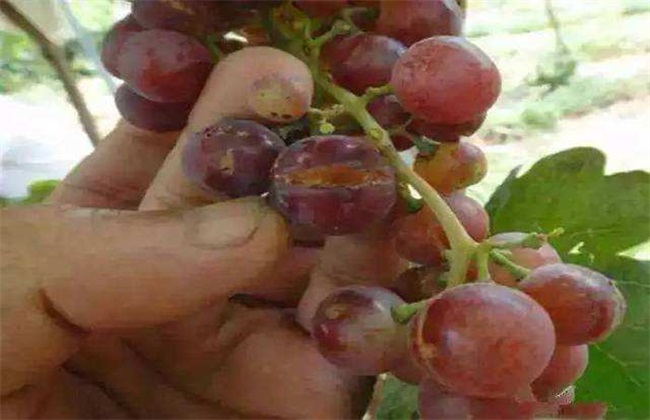Symptoms and causes of iron deficiency in grape
Grape is a very popular fruit, and the planting area in our country is also very large. However, when we grow grapes, there are often a lot of deficiency, seriously affecting the yield and quality of grapes. And iron deficiency is one of them, so what are the symptoms of grape iron deficiency? What is the cause? Today, the editor brought you the symptoms and causes of grape iron deficiency. Let's take a look at it.

Symptoms of iron deficiency
The form of iron in grape plants is generally in the form of high molecular compounds and will not be easily transferred in grapevines. Therefore, if the grape is deficient in iron, it will first appear on the young leaves, and the young leaves will gradually lose green. Except for the veins, the rest of the grapes will be yellowed, but the old leaves will not be affected. If the symptoms are serious, the leaves will turn brown and necrotic from the bottom up, and then dry up and fall off. The growth of the new shoot became worse, the inflorescence yellowed and fell off, and the fruit setting rate decreased obviously. It seriously affects the yield and quality of grapes and reduces the planting efficiency of farmers.
Second, the cause of the disease
1. Lack of iron
Grapes have a greater demand for iron than other fruits, so they are also very sensitive to iron. If the planting soil is sandy soil with more leaching and more rainfall, then the soil erosion is more serious, and the iron element is easy to be washed away, resulting in iron deficiency in the soil. At the same time, if there is a continuous high yield, then most of the iron in the soil will be absorbed. And if there is no timely supplement of iron, too little amount of organic fertilizer, then it will lead to serious iron deficiency in the soil.
2. Soil discomfort
Soil is also a major cause of iron deficiency in grapes, and the availability of iron in soil varies with the change of soil pH. If the soil PH value is about 8 and contains a large amount of calcium carbonate, then the soluble iron salt in the soil will become insoluble, resulting in a high content of total iron in the soil, but lack of available iron, which can not be absorbed by the grape root. In addition, if the soil is too sticky, poor drainage and irrigation and the temperature is too low, then the divalent iron ions in the soil are easy to be fixed, resulting in the grape roots can not be absorbed and the symptoms of iron deficiency.
3. Reasons for fertilization
From June to July every year, the vegetative growth and reproductive growth of grapes are in the same period. At this time, the demand for fertilizer is also very large, and many fruit farmers are used to applying fertilizer with water, and the fertilizer will be mainly compound fertilizer such as nitrogen, phosphorus and potassium, ignoring the application of iron fertilizer. At the same time, after irrigation, the available iron in the plough layer of the soil will move downward because of leaching, resulting in a decrease in the content of available iron in the dense area of the root, resulting in the symptoms of iron deficiency. Then there is the imbalance of nutrition, such as the discomfort of the proportion of trace elements such as zinc, copper and magnesium, which leads to antagonism between elements and affects the absorption of iron in grape roots.
The above is a brief introduction to the symptoms and causes of iron deficiency in grapes. That's all for today's introduction. This article is for reference only. I hope it can help you all.
Related
- Moge, come on! The staff of the peasant association in the producing area of cantaloupe were frightened when the crowd gathered.
- Causes and Solutions of low Fruit setting rate of Apple
- Symptoms and control measures of passion fruit virus disease
- Fruit growing lesson: how do apple orchards keep high yields?
- Can you build orchards in the mountains? What are the pros and cons?
- How to manage the coloring period of Crisson grape?
- This paper introduces the processing technology of two kinds of fig products.
- How much is a month for retired teachers in rural areas by 2020?
- How can strawberry planting increase sugar content? We should pay attention to management in many aspects.
- What are the cultivation techniques on how to improve the yield of golden fruit?



